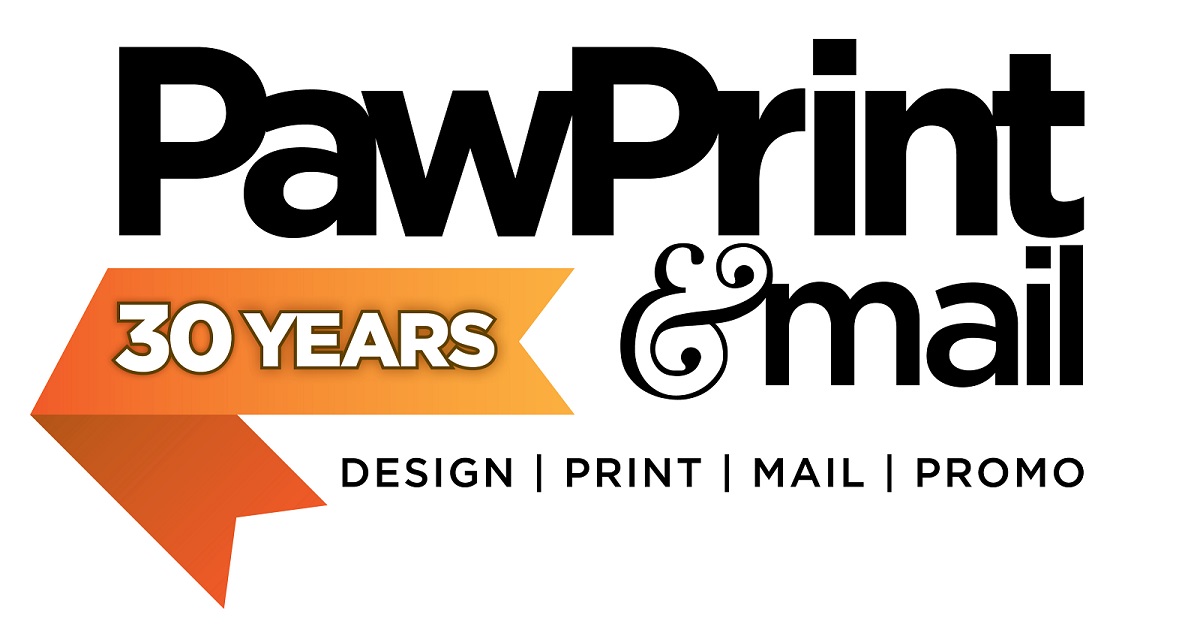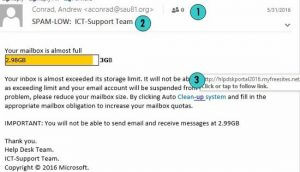 Talk about consistency and discipline, Hanson & Doremus Investment Management in Burlington, Vermont has not missed publishing and mailing their monthly investment newsletter Thoughts to their clients and key prospects since 1995. I know this because Paw Print & Mail has had the privilege of being their printing company since that time.
Talk about consistency and discipline, Hanson & Doremus Investment Management in Burlington, Vermont has not missed publishing and mailing their monthly investment newsletter Thoughts to their clients and key prospects since 1995. I know this because Paw Print & Mail has had the privilege of being their printing company since that time.
When asked why founder Eric Hanson persists mailing his newsletter all these years, particularly in a digital age, he knows there’s no substitute for disseminating the valuable work that goes into producing such a document, while reinforcing his brand, than putting it right in someone’s hands. Says Hanson, “It’s far too easy for people to pass over or delete an email in a crowded inbox. We still believe in mail because it’s tactile, it has shelf life, and because mail has become more unique and impressionable than email. We make the digital version available on our website, but the printed version gets more readership.”
A newsletter is a cost-effective medium for building and maintaining regular contact with customers and prospects. In its 2013 B2B Content Marketing Benchmarks, Budgets and Trends study, the Content Marketing Institute found that 78 percent of respondents used newsletters. Research firm Nielsen Norman Group asked respondents how they preferred to receive company updates, and 90 percent cited newsletters, compared to 10 percent for social media.
Developing a newsletter program with a solid audience will prove to be a very important marketing asset for the duration of your company. Think about how on any given website you only have a few seconds to capture the attention of a visitor before they are potentially gone forever.
Developing a strategy to attract new customers and retaining existing clients is crucial to successful marketing. Maintaining a company blog is a great way to get your personal message out to many viewers. But a blog is a passive effort, meaning a user must navigate to it in order to get the message. Transforming a passive blog into a pro-active newsletter program is a logical ancillary step.
Build Awareness:
Publishing a newsletter gives you the opportunity to increase awareness and understanding of your company and its products and services. Customers and prospects may have a limited perspective of what your company can offer if they only view your advertisements or receive promotional email. Newsletter content builds a broader picture. To encourage readers to find out more, add a call-to-action to encourage action and include links to more detailed information on your website.
Demonstrate your Expertise:
A newsletter can demonstrate your expertise and build confidence in your company as a potential supplier. Marketing consultancy PR20/20 notes that newsletter content that provides valuable information to customers and prospects helps to establish a company as an industry leader. To establish leadership, include articles that cover important issues in your market sector or share information on industry research. Provide details of any conferences where your company is making a presentation.
Promote your Business or Organization:
You can use newsletters to promote products and services or launch new products. Including information on special offers helps reinforce the effect of your advertising and promotional campaigns. Running special offers exclusive to readers enhances the value to the newsletter. You can integrate newsletter content with other elements of a new product launch by including announcements and articles related to the product.
Connect with Your Clients and Prospects:
Issuing newsletters at regular intervals – weekly, monthly or quarterly – helps you maintain contact with customers and prospects between purchases or sales calls. If you face a decision-making process that is long and complex, for example, you can use newsletters to communicate with all decision makers throughout the process. If customers buy your products or services infrequently, you can maintain contact between purchases so you build a strong relationship before the next sales opportunity.
Expand your Marketing Footprint:
Newsletters can help you increase the coverage of your target audience. By placing information about the newsletter on your website, you can capture contact details of new prospects by asking visitors to subscribe. Issuing newsletters by email to all of your customers and prospects is a low-cost method of communication, leaving more in your market budget for advertising or other promotional activities. Newsletters are therefore an extremely valuable marketing tool used by ourselves as well as by our customers. If you don’t have a newsletter, here are twelve reasons you should:
1. To increase awareness. Your newsletter should give enough information to create awareness about what you are offering your customers. People should get a good idea of how it would be to deal with you, or to buy your products, so that when they leave, they will feel compelled to find out more.
2. Position your brand. You should create the best first impression about your products or services on your newsletter. Customers tend to use your marketing and communication tools to form an impression of your business. Newsletters are an extremely strong marketing tool to differentiate businesses from one another.
3. To get more business from current clients. A newsletter is an effective way to let clients know about your other services and show them how they can benefit from those services, without being “pushy”.
4. To get repeat business from former clients. People who used your services or bought your products once will purchase again–when they’re ready. A newsletter is a great way to stay in touch with them until they are.
5. To educate prospects. A newsletter that provides prospective clients with valuable information helps them make better decisions, allows you to demonstrate your expertise, and provides a mechanism for staying in touch with them until they are ready to hire you.
6. To generate word-of-mouth referrals. Newsletters have pass-along value. A good newsletter will be shared with an average of three other people, even more online.
7. To build your contact list. You can offer visitors to your website a subscription to your newsletter in return for providing their email (and other contact information). When speaking or networking, you can offer to send your newsletter to people who provide you with their business card.
8. To establish expertise and credibility. Your writing helps prospects, publishers, reporters, meeting planners, and referral sources see you as the expert you are.
9. To provide content for, and traffic to, your web site. Your newsletter can drive traffic to your website or blog. Your newsletter content can be re-used as content on your web site or blog, generating additional traffic from search engines and social media.
10. To shorten the sales process. People who respond to your newsletter are better informed about what you do and pre-sold on your ability to do it, in contrast to people who come to you via advertising.
11. To serve as a networking tool. Your newsletter is a tool to reach out to other professionals. You can interview them for an article, conduct a survey, ask them to write an article, or ask permission to put them on your mailing list.
12. To add value to your services. A newsletter can provide an added benefit for clients. Give clients “subscriptions” or added value to current services or discounts on products. Put a price tag on the newsletter but send it free to current clients.
A newsletter requires an investment of time, and possibly some capital, but the return on that investment can be substantial. If you want to grow your business, a newsletter is one of the most highly leveraged marketing activities you can do.
Since 1990, Paw Print & Mail has been the reliable and expert source for printing and mailing newsletters, nonprofit appeal campaigns, and B2B printed communications of all kinds for hundreds of businesses and organizations. Read our reviews or contact us to plan or produce your next project.


 I don’t know what it’s like in your business or organization, but here at
I don’t know what it’s like in your business or organization, but here at 
 Talk about consistency and discipline,
Talk about consistency and discipline,  What’s in a brand? To some, branding is company’s logo. To others it’s the product or service sold. Further, it could mean how, where, and with whom a brand is talked about or mentioned, and how readily a brand is referred to someone else.
What’s in a brand? To some, branding is company’s logo. To others it’s the product or service sold. Further, it could mean how, where, and with whom a brand is talked about or mentioned, and how readily a brand is referred to someone else. Many website owners take the Ron Popeil approach with “set it and forget it” and while that may work for roasting chickens, it is a terrible web strategy. If it has been awhile since you reviewed your own website, summertime is an ideal time to do it. Here are 8 things to look for when you are doing a website audit.
Many website owners take the Ron Popeil approach with “set it and forget it” and while that may work for roasting chickens, it is a terrible web strategy. If it has been awhile since you reviewed your own website, summertime is an ideal time to do it. Here are 8 things to look for when you are doing a website audit. Articles and statistics touting the benefits of blogging are ubiquitous. You know you probably should be blogging, but how and what you should write about plague even the most seasoned marketers. If you aren’t sure blogging is right for you, let’s start with a few statistics.
Articles and statistics touting the benefits of blogging are ubiquitous. You know you probably should be blogging, but how and what you should write about plague even the most seasoned marketers. If you aren’t sure blogging is right for you, let’s start with a few statistics. We talk to a lot of clients and prospects about what is working for their business and what is not. When it comes to their online presence, we can fairly objectively evaluate their success level by looking at a few key reports on Google Analytics. If you aren’t currently using an analytics program to evaluate your own website, we would strongly suggest you add some as soon as possible. Google Analytics is free and provides a comprehensive overview of who is looking at your site, how they found your site, what they did once they were on your site and more. While Google isn’t the only game in town, it is one of the largest.
We talk to a lot of clients and prospects about what is working for their business and what is not. When it comes to their online presence, we can fairly objectively evaluate their success level by looking at a few key reports on Google Analytics. If you aren’t currently using an analytics program to evaluate your own website, we would strongly suggest you add some as soon as possible. Google Analytics is free and provides a comprehensive overview of who is looking at your site, how they found your site, what they did once they were on your site and more. While Google isn’t the only game in town, it is one of the largest. The reasons that anyone decides to venture down the path of business ownership vary. But for most, there’s one inarguable reason: the chance to live out your dream. Though you may think you are your company’s most important asset, nothing you do could happen without your customers. Your customers are, and always will be, the most important asset your business will ever have. With our experience in printing for small businesses, we’ve fulfilled some pretty creative customer retention pieces for our customers.
The reasons that anyone decides to venture down the path of business ownership vary. But for most, there’s one inarguable reason: the chance to live out your dream. Though you may think you are your company’s most important asset, nothing you do could happen without your customers. Your customers are, and always will be, the most important asset your business will ever have. With our experience in printing for small businesses, we’ve fulfilled some pretty creative customer retention pieces for our customers. There are 5 basic types of website design structures: Fixed Width, Adaptive, Responsive, Parallax, and Mobile. In a world rapidly moving toward being able to access any information on any device, a discussion of each follows.
There are 5 basic types of website design structures: Fixed Width, Adaptive, Responsive, Parallax, and Mobile. In a world rapidly moving toward being able to access any information on any device, a discussion of each follows.